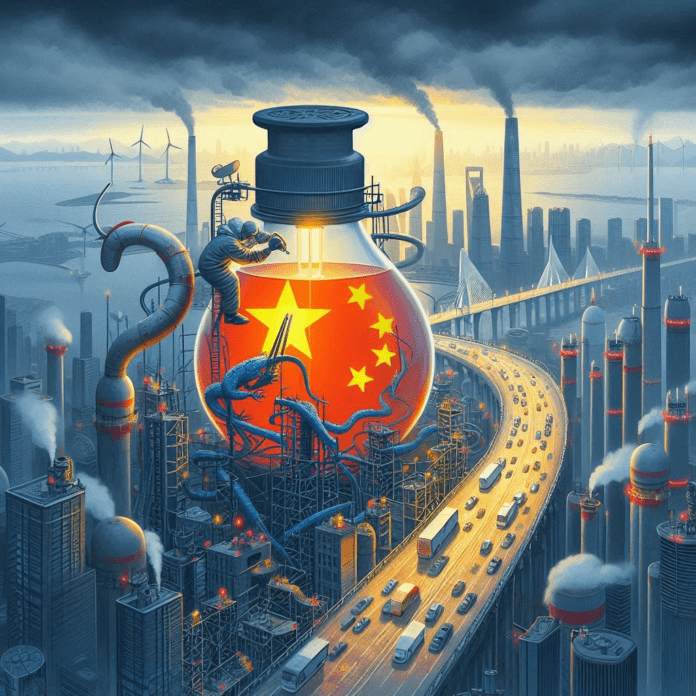China, long hailed as the world’s factory, is witnessing a slowing economy. Its tepid growth has caused concern among economists and policymakers. China’s economic slowdown is influenced by several factors. The COVID-19 pandemic has left lasting impacts, with strict lockdowns stifling economic activity. Geopolitical tensions have also played a role, leading to disruptions in supply chains and trade restrictions.
However, there is a silver lining that could help China navigate these turbulent times: its robust research and development (R&D) sector.
Between 2012 and 2021, foreign companies increased their research teams in China by 20%, reaching 716,000 people. Their spending on R&D nearly doubled to 338 billion yuan ($52 billion). Combined with investments from Chinese companies, China’s R&D spending now matches Europe’s. Only the United States spends more on R&D.
China’s Growing Research Power
Despite the COVID-19 pandemic, which caused strict lockdowns in China, 25 new foreign R&D centers opened in Shanghai in 2022. While foreign investments in other sectors dropped by 80%, investments in R&D grew by 4%. Foreign companies now see China’s innovation and regulatory environment as key to their global success. Technologies like new drugs and flying taxis can be tested quickly in China.
Even as China’s economy grows more slowly, and international businesses try to reduce their reliance on Chinese supply chains due to geopolitical tensions, CEOs are eager to maintain their R&D operations in China. Last year, Volkswagen invested over $1 billion in a new innovation center in Hefei. Bosch, another German company, is building a $1 billion R&D facility in Suzhou. HSBC, a British bank, employs thousands in its R&D center in southern China, focusing on AI and other advanced technologies.
AstraZeneca, a British pharmaceutical company, announced it would make its Shanghai office a global R&D hub. Apple, the maker of the iPhone, started new R&D projects in Shenzhen. Bayer, a German drugs and chemicals company, is expanding in Shanghai to bring more Chinese technology to the world. Tesla, the American electric vehicle company, received permission from Shanghai authorities to test its advanced self-driving systems on city streets.
Tesla to Face DOJ Investigation for Autonomous Driving Technology
Why Companies Invest in Chinese R&D
One big reason companies do a lot of R&D in China is the abundance of young engineers and scientists. Southern China is full of small companies developing clever technologies, from new chemicals to artificial intelligence (AI). This talent pool is very attractive to foreign companies. Chinese scientists are as talented as those in the West, where many have studied and worked. However, they earn less in China. A newly graduated Ph.D. at a foreign company in China makes about 13,000 yuan a month, a third of what they would earn in America. One company’s boss in China says he gets 30% more work from his Chinese research staff compared to similar workers in Europe.
Leticia Zheng Exposed in Sinister 7-Year Chinese Espionage Operation at the University of Florida
Much of this work focuses on development rather than basic research. China still produces less fundamental research than America, but it excels in applications. Its app economy is the most advanced in the world. Cosmetics companies, for instance, launch and test more products in China than anywhere else, allowing them to quickly learn what consumers like. Products that succeed in China are then sold globally.
Pharmaceutical companies, which spend a lot on R&D, benefit from a network of world-class contract research organizations that conduct trials more cheaply than in the West. The Chinese are also more willing to participate in clinical trials. With a population of 1.4 billion, it is easier to find enough patients for even rare disease trials. This makes China an important place for developing new medicines.
U.S. Urges FBI to Investigate Chinese Healthcare Espionage at GenScript and Its 3 Subsidiaries
Trials, whether for cosmetics, apps, medicines, or autonomous vehicles, are easier in China due to its supportive regulations. Local governments compete to be leaders in emerging industries, following President Xi Jinping’s vision of “high-quality growth.” Pharmaceutical executives praise Chinese rules for clinical studies, which are independently designed by researchers. In some fields, like cell therapies for cancer, China is finding successful treatments faster than other places. Developers of passenger drones also appreciate China’s rules that allow them to test their vehicles in designated zones in cities. Volkswagen started testing a prototype drone in Inner Mongolia in 2022, a world first for a major carmaker.
The Alarming Threat: How China’s Scientific Advancements Endanger US Supremacy
Challenges and Risks Ahead
Western companies are keen to keep their R&D operations in China. However, there are growing challenges. In June, America’s Treasury Department proposed rules to ban American firms from investing in AI, semiconductors, microelectronics, and quantum computing in China. These rules could come into effect later this year.
China’s strict security measures are also making it harder to move some intellectual property (IP) out of the country. Some technologies, like speech- and text-recognition software or TikTok’s recommendation algorithm, now need permission from the Chinese Commerce Ministry to be exported. Although most IP is still leaving China, this could change at any time.
US TikTok Ban: House Passes Bill to Force Sale or Shutdown
Some foreign companies are already moving research staff out of China. Microsoft, for example, is offering relocation packages to its AI researchers in Beijing. Although companies like AstraZeneca and Bayer remain optimistic about Chinese research, some are seeking clearer rules for cross-border data and IP transfers. As a result, they are rethinking their investments. While firms working on flying taxis are staying put for now, they may eventually have to leave China if conditions become too difficult.
China’s role as a global research hub is under pressure. Foreign companies value China’s talent and regulatory environment, but they are also wary of potential restrictions. The balance between innovation and regulation will determine the future of R&D in China.


